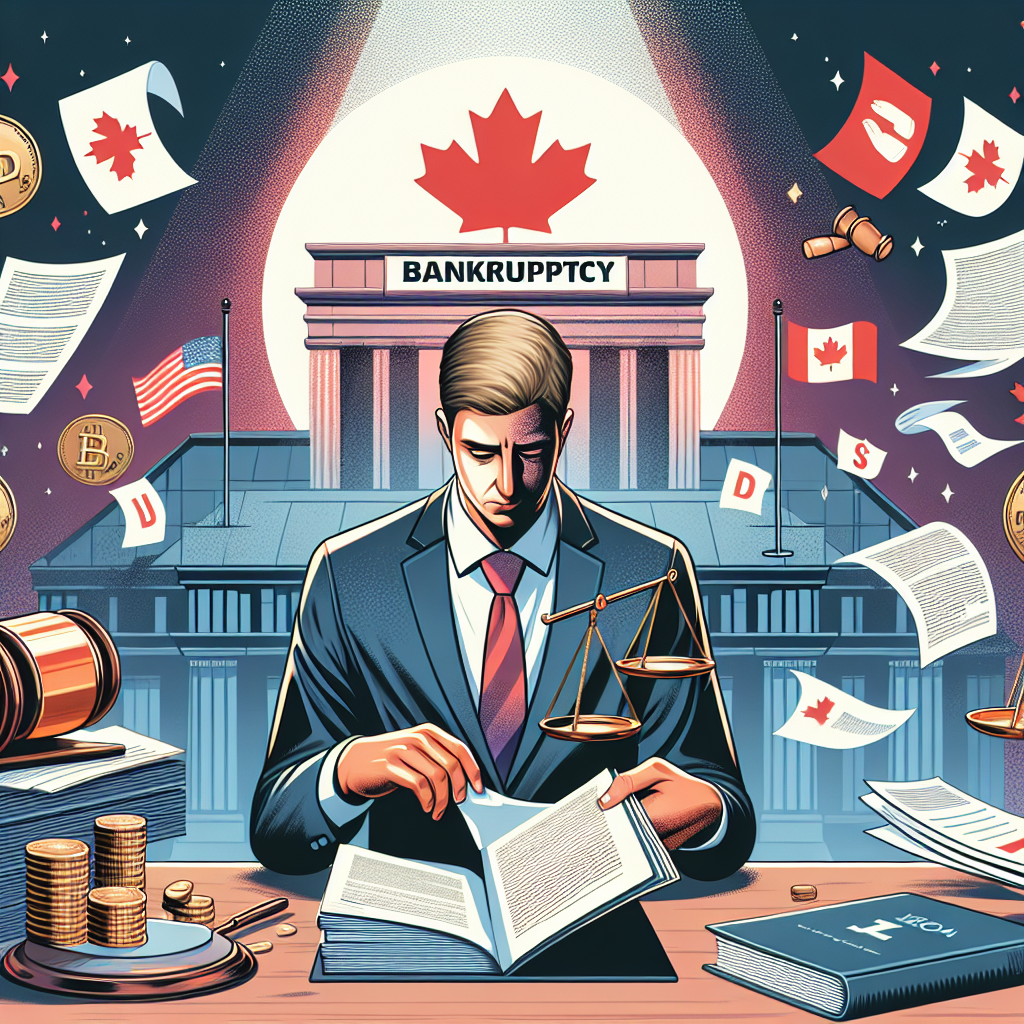Personal bankruptcy laws in Canada are designed to offer individuals overwhelmed by debt a fresh start. Navigating these laws requires a clear understanding of the fundamentals, awareness of key regulations, and knowledge of the implications and procedures involved in filing for bankruptcy. This article aims to provide a comprehensive overview of personal bankruptcy laws in Canada, offering insights into the steps involved and the potential consequences for individuals seeking relief from financial distress.
Understanding the Basics of Bankruptcy in Canada
Bankruptcy in Canada is a legal process governed by the federal government to help individuals who can no longer meet their debt obligations. It is designed to provide debt relief while ensuring fair treatment of creditors. When a person files for bankruptcy, they are relieved of their debts and, in return, must surrender their assets to a Licensed Insolvency Trustee (LIT), who administers the process. Bankruptcy is considered a last resort, used only when other debt relief solutions have been exhausted.
The concept of bankruptcy in Canada is governed by the Bankruptcy and Insolvency Act (BIA), which outlines the legal framework and procedures that must be followed. The BIA aims to balance the rights of debtors and creditors, ensuring that debtors can obtain relief while creditors receive equitable treatment. The act also provides for alternative solutions, such as consumer proposals, that may be more appropriate for certain individuals.
Individuals considering bankruptcy should understand that it impacts their credit rating significantly. Filing for bankruptcy will remain on a credit report for at least six years after discharge, affecting the ability to obtain credit in the future. Therefore, it is crucial to explore all available options and seek professional advice before proceeding with bankruptcy. For more information on bankruptcy basics, you can visit the Government of Canada’s website on bankruptcy{:target="_blank"}.
Key Personal Bankruptcy Laws and Regulations
The primary legislation governing personal bankruptcy in Canada is the Bankruptcy and Insolvency Act (BIA). This act sets out the legal framework for bankruptcy and insolvency proceedings and is designed to ensure an orderly and fair process for all parties involved. Under the BIA, individuals must work with a Licensed Insolvency Trustee, who is responsible for managing the bankruptcy process and ensuring compliance with the law.
Another critical regulation is the protection of certain assets from being seized during bankruptcy. While individuals are required to surrender their assets, there are exemptions that allow them to retain essential items, such as clothing, furniture, and tools of the trade, up to certain limits. These exemptions vary by province, reflecting the regional differences in cost of living and economic conditions.
Additionally, the BIA includes provisions to prevent abuse of the bankruptcy system. For instance, individuals who have engaged in fraudulent behavior or who repeatedly file for bankruptcy may face restrictions or be denied discharge from their debts. Understanding these regulations is crucial for individuals considering bankruptcy, as they impact the potential outcomes and obligations during the process. To delve deeper into the legal aspects of bankruptcy, you might explore resources from the Office of the Superintendent of Bankruptcy Canada{:target="_blank"}.
Filing for Bankruptcy: Steps and Requirements
Filing for bankruptcy in Canada involves several steps and requirements that must be carefully followed. The first step is to meet with a Licensed Insolvency Trustee (LIT) to assess your financial situation and determine if bankruptcy is the most suitable option. The LIT will review your debts, assets, income, and expenses to provide a clear picture of your financial status and explore alternative solutions, such as a consumer proposal.
Once it is determined that bankruptcy is the appropriate course of action, the individual must complete and submit a detailed application to the LIT. This application includes a comprehensive list of assets, liabilities, income, and expenses, as well as information about any previous insolvency proceedings. The LIT will then file the bankruptcy with the Office of the Superintendent of Bankruptcy (OSB), officially starting the process.
After filing, individuals must fulfill specific duties, such as attending credit counseling sessions, providing monthly income and expense reports, and making required payments to the LIT. These duties are designed to help individuals better manage their finances and avoid future insolvency issues. For a step-by-step guide on the bankruptcy process, refer to our comprehensive bankruptcy filing guide.
Implications of Declaring Bankruptcy in Canada
Declaring bankruptcy in Canada has significant implications for an individual’s financial future and personal life. One of the most immediate impacts is on the individual’s credit rating, as bankruptcy will be noted on their credit report for several years, making it more challenging to secure loans or credit cards. It is important to be aware of these long-term effects when considering bankruptcy as a solution.
In addition to affecting credit, bankruptcy can also impact employment opportunities. While most employers do not consider bankruptcy a barrier to employment, certain professions that require financial responsibility or security clearances may view it unfavorably. Therefore, individuals should consider how bankruptcy might affect their career prospects before proceeding.
On a more positive note, bankruptcy provides individuals with an opportunity to discharge most of their unsecured debts, such as credit card balances and personal loans, offering a chance to rebuild their financial lives. By adhering to the bankruptcy process and fulfilling their obligations, individuals can achieve a fresh financial start. For more insights on managing life after bankruptcy, check out our article on rebuilding credit post-bankruptcy.
Navigating personal bankruptcy laws in Canada requires careful consideration and understanding of the legal framework, steps involved, and potential consequences. While bankruptcy can offer much-needed relief from overwhelming debt, it is a decision that carries significant implications for one’s financial and personal life. By thoroughly exploring all available options and seeking professional guidance, individuals can make informed decisions that best suit their circumstances. For further reading, explore our resource on debt relief alternatives or connect with a financial advisor to discuss your specific situation.
Emergency debt help servicesHow to qualify for a consumer proposalAffordable debt repayment plansRelevant LinkRelevant LinkRelevant Link
